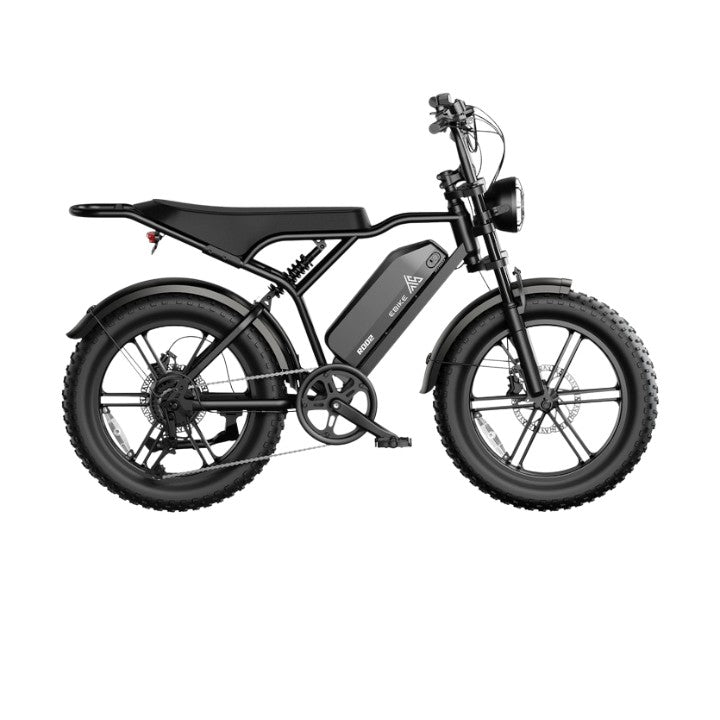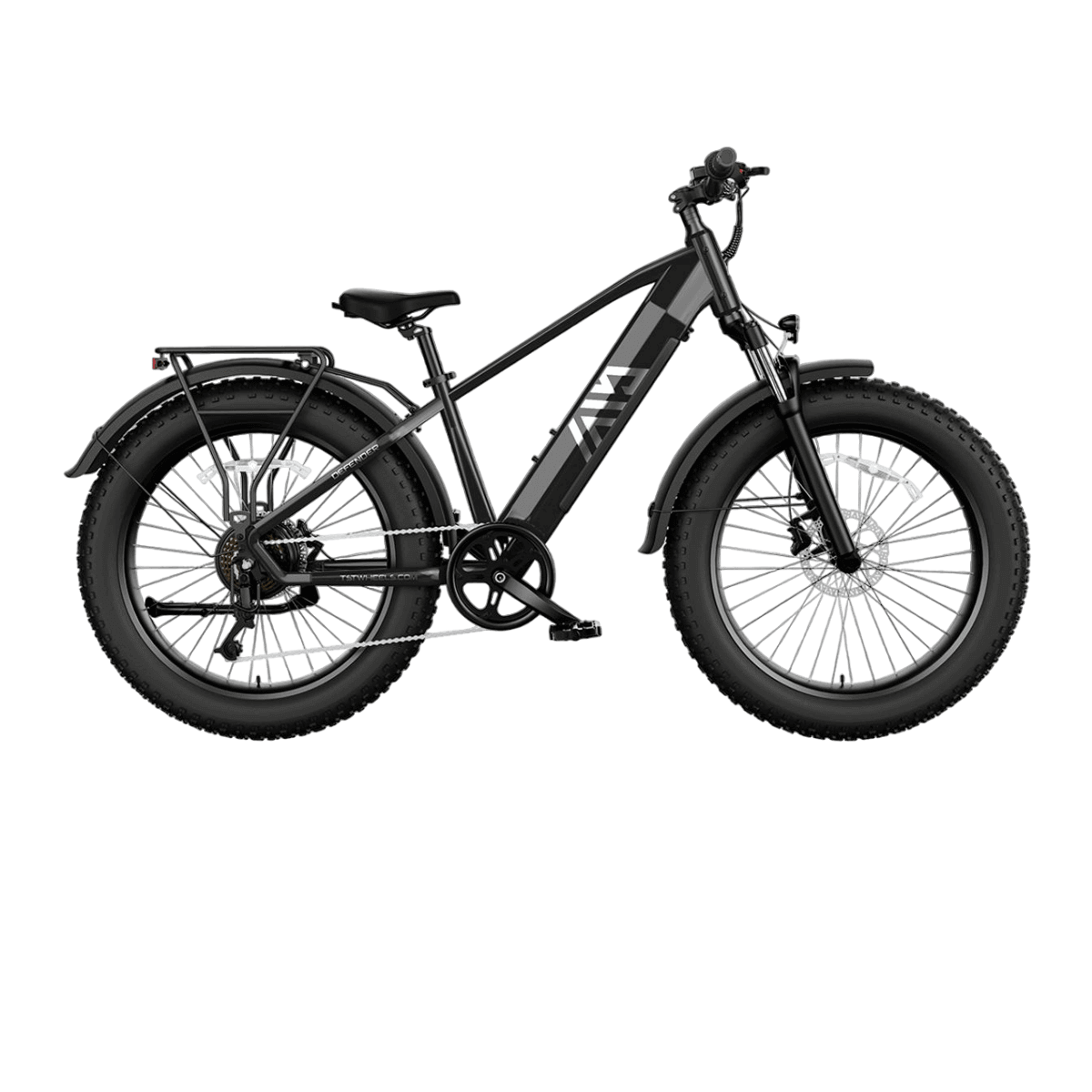Electric bike classes categorize e-bikes into Class 1, 2, and 3 based on motor assistance type and speed limits, helping riders choose the right model for their needs and comply with local laws. Class 1 offers pedal-assist up to 20 mph, Class 2 adds throttle control also up to 20 mph, and Class 3 provides pedal-assist up to 28 mph for faster commuting and performance.
What Are the Different Electric Bike Classes and How Do They Differ?
Electric bikes fall into three classes. Class 1 offers pedal assist up to 20 mph. Class 2 includes a throttle, also capped at 20 mph. Class 3 provides pedal assist up to 28 mph but no throttle. The key differences lie in speed limits, motor engagement, and where each class is legally allowed. Class 1 is the most widely accepted, while Class 3 may be limited to road use in some regions.
Electric bike classes are defined primarily by how the motor assists the rider and the maximum speed allowed:
- Class 1: Pedal-assist only with motor support up to 20 mph; no throttle. These bikes require pedaling to engage the motor and are widely allowed on bike paths and trails.
- Class 2: Equipped with a throttle allowing motor power without pedaling, capped at 20 mph. Pedal assist is also available, offering flexibility for riders who want effortless acceleration.
- Class 3: Pedal-assist only but with a higher speed limit of 28 mph. These bikes do not usually have throttles and are designed for faster commuting, though they may face restrictions on multi-use paths.
Class 4 e-bikes exist but are generally classified as mopeds or motorcycles with stricter regulations and licensing requirements.
How Can You Identify Your E-Bike’s Class?
You can identify your e-bike’s class by checking the manufacturer label, usually located on the frame. This label outlines whether it’s Class 1, 2, or 3 based on top speed and whether it uses pedal assist, throttle, or both. If no label is present, refer to the owner’s manual or specifications listed online. Knowing the class helps ensure you’re riding legally and safely in areas with specific e-bike regulations.
Determining your e-bike’s class involves checking motor type, speed limits, and presence of throttle:
- Throttle presence: If your bike has a throttle (twist grip or thumb lever), it’s likely Class 2.
- Speed limit: Bikes capped at 20 mph with pedal assist only are Class 1; those reaching 28 mph with pedal assist only are Class 3.
- Motor power: Most Class 1 and 2 bikes have motors between 250W and 750W; Class 3 bikes may have similar power but optimized for higher speed.
Examining the bike’s display or manual can also provide class information.
What Are the Legal and Usage Implications of Each Class?
Each e-bike class has legal restrictions that impact where and how you ride. Class 1 and 2 are typically allowed on bike paths and trails, while Class 3 is often restricted to roads or bike lanes due to higher speeds. Helmets and age minimums may be required, especially for Class 3. Understanding these rules helps you avoid fines and ensures safe, legal operation depending on your state or city’s regulations.
Each class has distinct legal restrictions and allowed riding locations:
- Class 1: Allowed on most bike paths, multi-use trails, and roads; no license or registration required.
- Class 2: Similar access to Class 1 but with throttle use; also no license needed in most areas.
- Class 3: Allowed on roads and bike lanes but often restricted from multi-use trails; riders usually must be 17 or older and wear helmets.
Local laws vary, so verifying regulations is essential before riding.
Which TST EBike Models Correspond to Each Class and What Are Their Features?
TST e-bikes offer models in all three classes. The TST CityCruze is a Class 1 with pedal assist, perfect for urban paths. The TST Explorer fits Class 2, adding throttle for casual commuting. The TST RidgePro is a Class 3 model with speeds up to 28 mph and advanced suspension and brakes for rugged terrain. Each model is designed to suit legal requirements and enhance performance based on the rider's needs.
TST EBike offers models suited to different classes and rider needs:
- 26-inch TST EBike Model: Suited for rough terrains like snow and sand, typically Class 1 or 3 configurations with pedal-assist motors optimized for power and control.
- 27-inch TST EBike Model: Designed for daily commuting and mountain biking, often available in Class 3 setups for higher speed pedal assist, balancing agility and power.
Both models feature durable frames, high-capacity batteries, and quality components tailored to their class specifications.
TST EBike Model Class Features Chart
| Feature | 26-inch Model | 27-inch Model |
|---|---|---|
| Typical Class | 1 or 3 | 3 |
| Motor Power | 1000W mid-drive | 1000W mid-drive |
| Max Speed | 20-28 mph | 28 mph |
| Terrain Suitability | Rough terrains (snow, sand) | Commuting, mountain biking |
| Pedal Assist | Yes | Yes |
| Throttle | Optional (Class 2 variant) | Optional (Class 2 variant) |
How Do Electric Bike Classes Affect Battery Life and Performance?
Higher class e-bikes, especially Class 3, often demand more from batteries due to higher speeds and power output, potentially reducing range if ridden aggressively. Class 1 and 2 bikes, capped at 20 mph, generally offer longer battery life per charge due to lower power demands. Efficient battery management and riding style significantly influence performance across all classes.
What Are Electric Bike Kits And How Do They Work?
Electric bike kits are conversion kits that add motorized assistance to a standard bicycle. They include a motor, battery, controller, and sensors. When installed, the kit provides pedal assist or throttle power, turning a regular bike into an e-bike for easier riding and improved speed.
How To Install Electric Bike Kits On A Standard Bicycle?
To install an electric bike kit, attach the motor to the wheel or frame, mount the battery securely, connect wiring to the controller and sensors, and install the throttle or pedal-assist system. Follow the kit instructions carefully for safe and proper setup.
To install an electric bike kit on a standard bicycle, start by carefully attaching the motor to either the front or rear wheel hub, or in some cases, the bike’s frame if it’s a mid-drive motor. Next, securely mount the battery in a stable location, often on the frame’s downtube or rear rack, ensuring it’s well-protected from vibration and weather. Properly routing and connecting the wiring to the controller and sensors is crucial for smooth operation. This includes linking the throttle or pedal-assist system, which controls power delivery based on your pedaling or throttle input.
Always follow the manufacturer’s instructions step-by-step to ensure safe and correct installation. Double-check all electrical connections and mechanical fittings to prevent malfunctions or hazards. After installation, test the system thoroughly, making sure the motor responds correctly to commands and the battery charges properly. With patience and attention to detail, you can convert your regular bike into an efficient, powerful electric bike.
How Do E Bike Classes Help Beginners Learn?
E-bike classes help beginners by clarifying bike types and legal limits, making it easier to choose the right e-bike. Understanding classes improves safety, compliance with laws, and ensures riders know how the bike’s motor assists their pedaling.
E-bike classes provide invaluable guidance for beginners by clearly explaining the different types of electric bikes and their legal limits. These classes help new riders understand distinctions between Class 1, Class 2, and Class 3 e-bikes—covering aspects like motor power, top speeds, and throttle use. This knowledge makes it much easier to choose the right e-bike that fits individual needs, whether for commuting, recreation, or off-road use. Learning about e-bike classes also helps riders avoid legal issues by ensuring they use their bikes in compliance with local laws and regulations.
Moreover, e-bike classes improve safety and confidence by teaching beginners how the bike’s motor assists pedaling and when to expect power support. This understanding allows riders to anticipate bike behavior, control speed effectively, and maintain balance, reducing accidents and enhancing the overall riding experience. With expert guidance, beginners gain the skills and knowledge necessary to enjoy e-biking safely and responsibly.
Why Are Electric Bicycle Classes Important For Riders?
Electric bicycle classes are important because they regulate speed and motor use, enhancing safety and legal compliance. They help riders understand which bikes are allowed on trails, roads, and bike lanes, promoting responsible e-bike use and reducing accidents.
Electric bicycle classes play a crucial role in ensuring riders’ safety and legal compliance by clearly regulating speed limits and motor power. These classifications help define what types of e-bikes are allowed on various paths—whether it’s busy roads, bike lanes, or nature trails—ensuring that riders use their bikes in appropriate settings. By understanding the differences between Class 1, Class 2, and Class 3 e-bikes, riders can make informed choices that align with local laws, reducing the risk of fines or conflicts with other trail users.
Furthermore, electric bike classes promote responsible riding by educating users about the proper operation and limitations of their e-bikes. This knowledge helps reduce accidents caused by misuse or misunderstanding of motor assistance and speed capabilities. Overall, these classes foster a safer, more enjoyable environment for all cyclists and pedestrians, encouraging harmonious sharing of public spaces while maximizing the benefits of electric bicycles.
Why Choose Electric Bike Kits Instead Of Buying A New E-Bike?
Choose electric bike kits to upgrade your current bike affordably, preserving its feel and style. Kits offer customization, cost savings, and flexibility, making them ideal for riders who want electric assistance without investing in a new e-bike.
Choosing electric bike kits instead of buying a new e-bike is a smart way to upgrade your current bicycle without breaking the bank. Kits allow you to keep the familiar feel, style, and comfort of your trusted bike while adding the power of electric assistance. This makes the transition to an e-bike experience more personalized and enjoyable. With a kit, you can customize your bike’s motor power, battery capacity, and control systems according to your specific riding needs and preferences.
Additionally, electric bike kits offer significant cost savings compared to purchasing a brand-new e-bike, making them a budget-friendly option. They also provide flexibility—you can choose to install the kit yourself or have it professionally fitted, and you can upgrade or replace components as technology advances. For riders who want the benefits of electric assistance but prefer to maintain their current bike, kits deliver an efficient, economical, and customizable solution.
Buying Tips
When selecting an electric bike class and model, consider:
- Your riding environment: Choose Class 1 or 2 for multi-use trails and casual riding; Class 3 for faster commuting and road use.
- Legal requirements: Check local laws regarding age limits, helmet use, and trail access for each class.
- Power and speed needs: Match motor power and speed limits to your commute or adventure plans.
- Model compatibility: TST EBike’s 26-inch and 27-inch models offer versatile options across classes with quality control based on consumer feedback.
- Battery range: Consider your daily distance to select a battery capacity that meets your needs.
- Safety features: Prioritize models with reliable brakes, lights, and durable frames.
In light of the rising popularity of electric bikes, lawmakers have faced unfamiliar challenges. In 2020, the United States established a clear distinction by categorizing electric bikes separately from motor vehicles. Consequently, eBike classes were introduced to provide manufacturers with guidance on production boundaries and aid consumers in comprehending the unique features offered by each class.
Four primary categories exist: Class 1, Class 2, Class 3, and Class 4; each carrying its own set of regulations outlining maximum speeds and throttle assistance. Now let's delve deeper into these diverse classifications.
-Class 1: Pedal-assist only with a maximum assisted speed of 20 mph(32km/h).
-Class 2: Includes throttle assistance without pedaling requirement.
-Class 3: Pedal-assist with a higher maximum assisted speed of approximately 28 mph(45km/h).
-Class 4: Not considered bicycles, require licensing and insurance, and have more powerful motors exceeding 750W.
Class 1 eBikes:
Class 1 eBikes are pedal-assist only, with no throttle, and a maximum assisted speed of 20 mph. They are widely accepted on bike paths and multi-use trails, making them ideal for commuters and recreational riders.
Class 1 eBikes are pedal-assist only bikes with a maximum assisted speed of 20mph. They do not include a throttle control; you must pedal to engage the motor assistance. These types of eBikes are also known as Pedelecs (pedal electric cycles). The inclusion of these bikes as Class 1 was written into legislation in October 2020 in the United States.
These bikes are great for commuting or recreational riding where you don't want to arrive sweaty but still want some exercise. They can be ridden on certain mountain bike trails and bike paths that were previously off-limits due to their ambiguous motor vehicle status.
Class 2 eBikes:
Class 2 eBikes feature both pedal-assist and throttle modes, allowing riders to engage the motor without pedaling. They also have a top speed of 20 mph and are commonly permitted on bike lanes and trails.
Class 2 eBikes also have a maximum assisted speed limit of 20mph like Class-1 counterparts but differ by including throttle assistance without pedaling requirement. You can use the throttle alone without engaging pedal power if desired; however, once you start pedaling, both systems work together simultaneously.
These bikes generally resemble Class-1 models but come with an additional handlebar-mounted throttle for easy access when needed.
Examples include TST's Class 2 eBikes, which have a throttle that assists up to 20mph.
Class 3 eBikes:
Class 3 eBikes are pedal-assist only, with no throttle, and can reach speeds up to 28 mph. Due to their higher speed, they are often restricted from bike paths and require riders to be at least 16 years old and wear a helmet.
Class 3 eBikes have a maximum assisted speed of 28mph and must be equipped with a speedometer. They can have both pedal assistance and a throttle; however, the use of the throttle may be restricted depending on state laws. Some states prohibit throttles entirely, while others allow them but limit their use to speeds below the maximum assisted speed.
It's important to note that these bikes are not allowed on bike paths outside the road in certain states. Manufacturers often set limits to throttle speeds (usually at 20mph) for compliance purposes. However, some class-3 eBikes can be adjusted so you can remove or adjust this limit when riding off-road or in areas where higher speeds are permitted.
TST Ebike can unlock speed assist you up to 28 mph.
Class 4 eBikes:
Class 4 eBikes are not considered bicycles and are treated as motorized vehicles. These bikes have more powerful motors exceeding 750W and can reach speeds above 28 mph. They require licensing and insurance like other motorized vehicles, making them unsuitable for riding on bike lanes or paths.
Class 4 e-bikes are not considered bicycles and are treated as motorized vehicles. These bikes have more powerful motors exceeding 750W and can reach speeds above28mph (45km/h). They require licensing and insurance like other motorized vehicles, making them unsuitable for riding on bike lanes or paths. Class 4 e-bikes resemble electric dirt bikes but include pedals.
When choosing an electric bike, you should consider which class suits your needs and comply with local laws pertaining to each class's restrictions.
In Europe, mainly only class 1-type e-bikes are available due to stricter regulations compared to the US market that offers a wider selection of classes one through three. Classes one through three generally fall under street legal categories except for class four because it is prohibited from being used on roads or in bike lanes due to its classification as a motor vehicle.
It's worth noting that even though the US government clarified the e-bike classifications in recent years, some states may still need time before implementing these rules fully – so always consult local legislation for accurate information about where you're allowed to ride your chosen type of electric bicycle.
Safety Considerations and Regulations for E-Bike Classes
Safety regulations vary by class and location. Generally, Class 1 and 2 eBikes are allowed on most bike paths, while Class 3 eBikes may be restricted to roadways and require helmets and age limits. Class 4 eBikes, being motorized vehicles, are subject to licensing, insurance, and are prohibited from bike paths.
E-bikes offer an exciting and convenient mode of transportation, but understanding the regulations that apply to each class of e-bike is essential.
For Class 1 pedal assist electric bikes, riders need to remember that they are still required to pedal in order for the motor to engage. With greater control over speed, you'll be able to better navigate traffic and crowded areas, but as with any other cyclist, it's important to remain aware of your surroundings.
Class 2 throttle-assisted electric bikes provide a different riding experience with the ability to accelerate without pedaling. It's important for riders of these bikes to exercise caution when using the throttle feature, especially in busy areas or on uneven terrain. Always be mindful of pedestrians and other vehicles sharing the road.
Class 3 speed pedelec electric bikes can reach higher speeds than pedal assist models, often up to 28 mph (45 km/h). These faster speeds require even more vigilance from riders as they navigate roads and bike lanes alongside traditional cyclists. Remember that some jurisdictions may require additional licensing or registration for this class of e-bike.
Before purchasing or operating a motor exceeding 750W, make sure you familiarize yourself with local laws in your area before purchasing or operating it. These powerful motors fall into their own category beyond Class 3 restrictions.
Understanding the different classes of electric bikes is essential for choosing the right model that suits your needs while also complying with local regulations. Whether you prefer a gentle pedal-assist ride or crave more power with a throttle-assisted option, always prioritize safety by wearing protective gear such as helmets and following traffic rules applicable in your area.
Summary
Understanding eBike classes is crucial for compliance and safety. Class 1 and 2 eBikes are suitable for most riders and terrains, offering speeds up to 20 mph. Class 3 eBikes cater to experienced riders needing higher speeds, while Class 4 eBikes are regulated as motor vehicles and not permitted on standard bike paths.
Understanding the different classes of electric bikes (eB ikes) helps both manufacturers and consumers navigate legal boundaries while enjoying the benefits offered by these innovative modes of transportation. From pedal-assist-only options (class1) providing assistance up to 20 mph,to those offering throttle assistance (class 2) to high-speed models (class3), and off-road powerhouses (class4), there is an eBike suitable for every rider.
So why wait? Grab your helmet and explore all the benefits that electric bikes have to offer! Happy e-biking, and remember to always ride responsibly.














Leave a comment
All comments are moderated before being published.
This site is protected by hCaptcha and the hCaptcha Privacy Policy and Terms of Service apply.